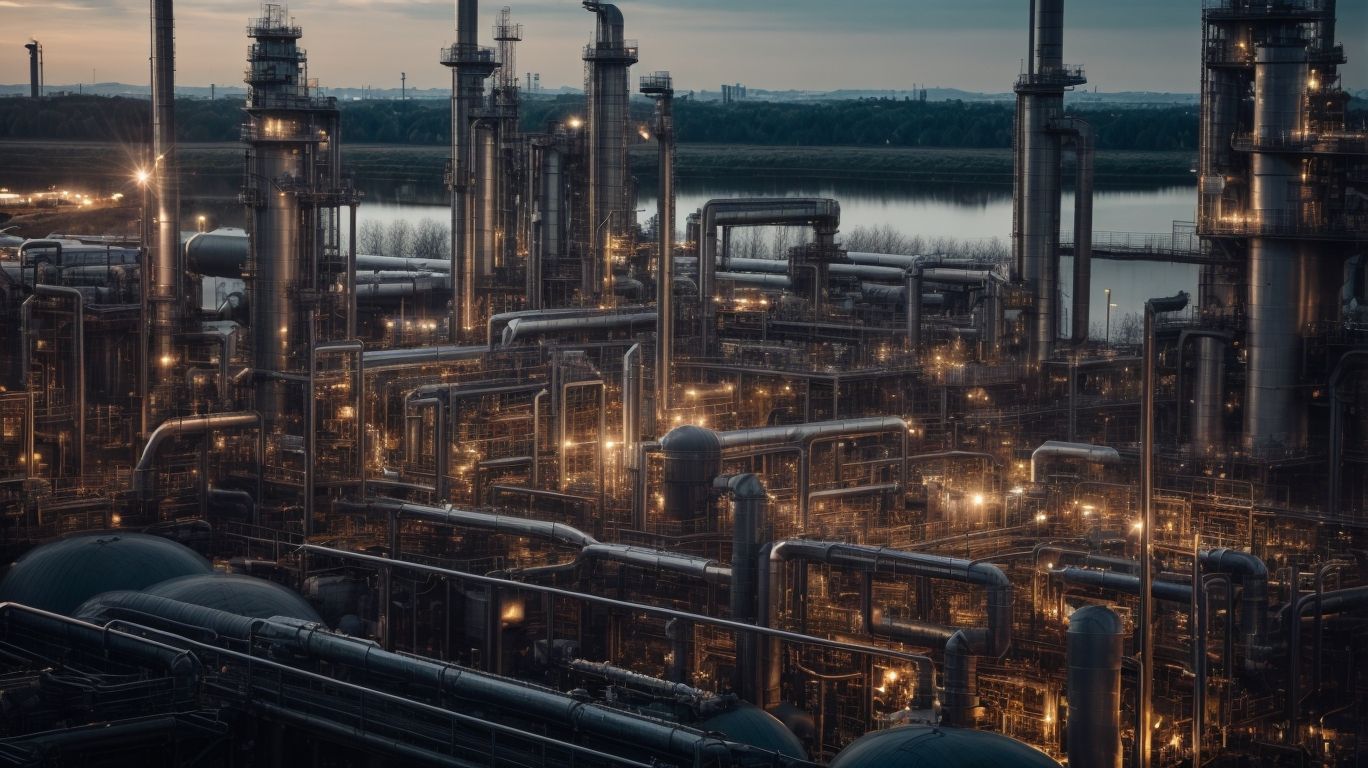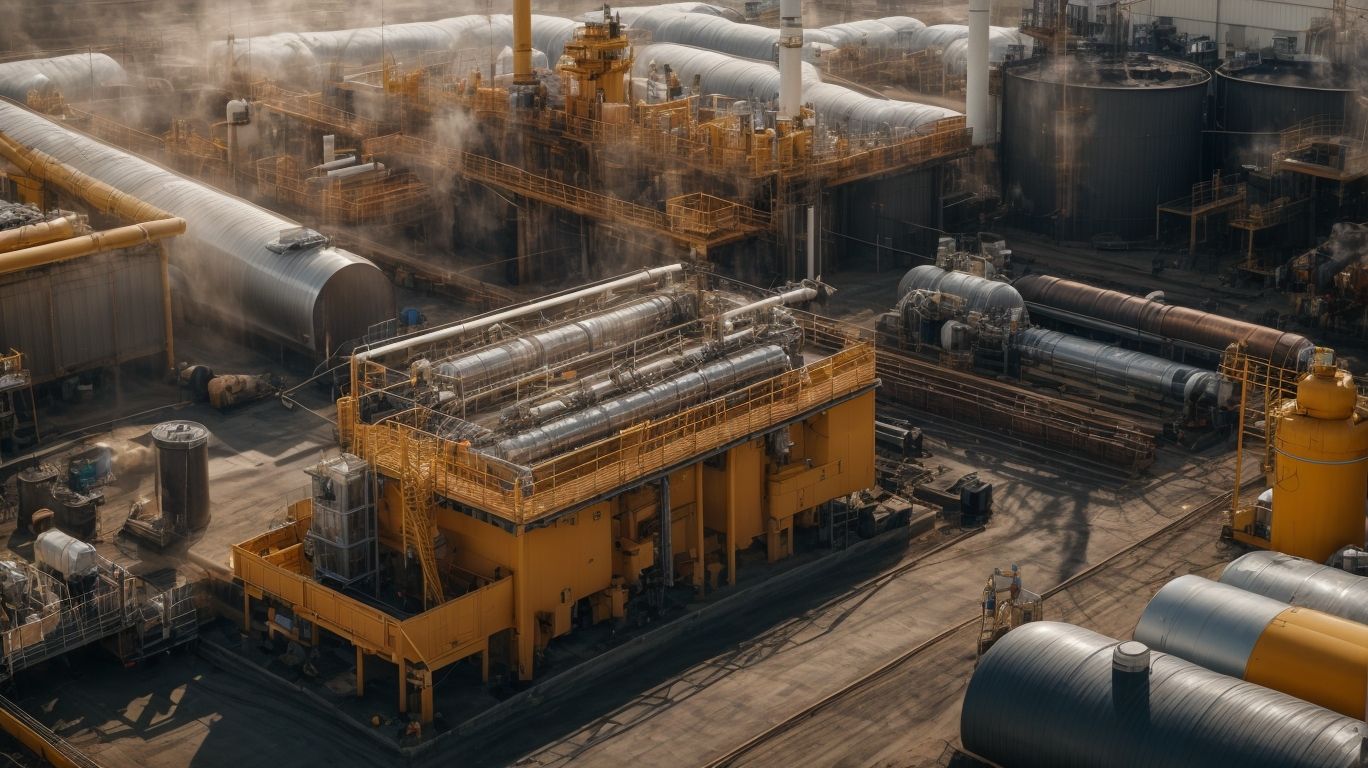Benzene is a colorless, highly flammable, and toxic liquid hydrocarbon compound. It is one of the most widely used chemicals globally due to its versatile applications in various industries. According to a study published in the Journal of Environmental Health Perspectives, benzene is ranked 17th on the list of the top 20 chemicals produced in the United States.
Benzene is primarily produced from crude oil, and it is also a natural component of crude oil, gasoline, and cigarette smoke. It is a highly volatile and carcinogenic compound, making it a major concern for human health and the environment. However, its usage in various industries cannot be ignored, and it plays a crucial role in the production of everyday items.
Some of the major uses of benzene include:
- Production of Plastics and Synthetic Fibers: Benzene is a key ingredient in the production of various plastics, such as polystyrene and polyurethane, and synthetic fibers, such as nylon and polyester.
- Manufacturing of Detergents and Cleaning Products: Benzene is used as a solvent in the production of detergents and cleaning products, making them more effective in removing dirt and stains.
- Production of Rubber: Benzene is a vital component in the manufacturing of rubber, which is used in various products, including tires, hoses, and belts.
- Solvent in Chemical Reactions: Benzene is an excellent solvent and is widely used in chemical reactions to dissolve and mix other substances.
- Fuel Additive in Gasoline: Benzene is added to gasoline to increase its octane rating, which improves engine performance.
- Component in Pharmaceuticals and Medicines: Benzene is used as a raw material in the production of various medicines, including anesthetics, sedatives, and antiseptics.
Despite its widespread usage, benzene exposure can have severe health effects, including both acute and chronic effects. Acute exposure to high levels of benzene can cause dizziness, headaches, and even death, while chronic exposure can result in blood disorders and an increased risk of cancer.
To prevent benzene exposure, proper handling and storage, use of protective equipment, and regular monitoring and testing are essential. Various regulations are in place to control and regulate the use of benzene, such as the Occupational Safety and Health Administration (OSHA) and the Environmental Protection Agency (EPA) in the United States, and the International Agency for Research on Cancer (IARC) globally. These regulations aim to protect both workers and the environment from the harmful effects of benzene.
Key Takeaways:
What Is Benzene?

Photo Credits: Chemicalglossary.Net by Christian Flores
Benzene is a colorless, flammable liquid with a sweet odor. It is a natural component of crude oil and has versatile applications in various industries. But what exactly is benzene? It is a crucial building block in the production of plastics, resins, synthetic fibers, rubber, lubricants, dyes, detergents, pesticides, and pharmaceuticals.
How Is Benzene Produced?

Photo Credits: Chemicalglossary.Net by Jesse Nguyen
- Extraction: Benzene is primarily produced as a byproduct of the oil refining process or extracted from coal tar during coke production.
- Separation: The extracted material undergoes a separation process, where benzene is separated from other hydrocarbons through distillation.
- Purification: After separation, the benzene undergoes further purification processes to remove impurities and ensure its quality meets industry standards.
- Storage and Distribution: The purified benzene is then stored and distributed to various industries for its intended applications.
What Are the Uses of Benzene?

Photo Credits: Chemicalglossary.Net by Douglas Adams
Benzene is a highly versatile and widely used chemical compound that has numerous applications in various industries. In this section, we will explore the many uses of benzene and its importance in different fields. From plastic production to pharmaceuticals, benzene plays a crucial role in the development and functioning of many products and processes. Let’s dive into the diverse applications of this essential compound and understand how it contributes to our daily lives.
1. Production of Plastics and Synthetic Fibers
- Raw Material Preparation: Obtain raw materials such as ethylene and propylene through steam cracking of hydrocarbons.
- Polymerization: Initiate the polymerization process to form long chains of polymers by combining monomers such as styrene and vinyl chloride.
- Spinning: Convert the polymers into fibers through the spinning process, resulting in materials like nylon and polyester.
Pro-tip: When producing plastics and synthetic fibers, make sure to have proper ventilation to minimize exposure to harmful substances.
2. Manufacturing of Detergents and Cleaning Products
- Selection of raw materials: Obtain suitable chemicals and compounds such as surfactants, builders, and enzymes for the manufacturing of detergents and cleaning products.
- Chemical reaction: Combine the raw materials to form the detergent base through processes like saponification and ethoxylation.
- Formulation: Add fragrances, colors, and other additives to enhance the appeal and effectiveness of the product.
- Packaging: Fill the manufactured detergent into appropriate containers and label them accordingly for distribution.
- Quality control: Test the detergent for stability, performance, and safety before releasing it to the market.
3. Production of Rubber
- Vulcanization: Benzene is a crucial component in the production of rubber, as it is used in the vulcanization process to convert natural rubber into a more durable material.
- Synthetic rubber production: Benzene is a key raw material in the production of synthetic rubber, increasing its elasticity and strength.
- Tire manufacturing: Benzene-derived rubber compounds play an essential role in the production of tires, improving road traction and durability.
4. Solvent in Chemical Reactions
- Dissolve solutes: Benzene is commonly used as a solvent in chemical reactions to dissolve and mix substances, playing a crucial role in various industrial processes.
Benzene’s role as a solvent in chemical reactions can be traced back to the 19th century, revolutionizing organic chemistry by enabling the synthesis of numerous compounds.
5. Fuel Additive in Gasoline
- Improving octane rating: Benzene is commonly used as a fuel additive in gasoline to boost its octane number, resulting in optimal engine performance.
- Reducing knocking tendency: With its high blending octane number, benzene can effectively decrease the knocking tendency in gasoline engines.
- Enhancing combustion: By aiding in the achievement of complete combustion, benzene contributes to reduced emissions and improved fuel efficiency.
6. Component in Pharmaceuticals and Medicines
- Benzene is an essential component in the production of various drugs, including antibiotics, antiseptics, and other pharmaceutical products used in the medical industry.
What Are the Health Effects of Benzene Exposure?

Photo Credits: Chemicalglossary.Net by Andrew Ramirez
Benzene is a widely used chemical in various industries, from manufacturing to transportation. However, with its widespread use comes the potential for exposure and its associated health effects. In this section, we will examine the health effects of benzene exposure, both in the short-term and long-term. We will discuss the acute effects of immediate exposure, as well as the chronic effects of prolonged exposure, to provide a comprehensive understanding of the potential risks associated with this chemical.
1. Acute Effects
- Immediate symptoms: headache, dizziness, drowsiness.
- High exposure effects: irregular heartbeat, unconsciousness.
- Long-term risks: leukemia, anemia, immune system damage.
To mitigate acute effects, ensure proper ventilation in work areas and use protective gear.
2. Chronic Effects
- Bone Marrow Damage: Prolonged exposure to benzene can lead to a decrease in red blood cells, leading to anemia and fatigue.
- Immune System Suppression: Benzene exposure can weaken the immune system, making individuals more susceptible to infections and illnesses.
- Chronic Effects: Long-term exposure can increase the risk of developing chronic conditions such as leukemia, lymphomas, and other blood disorders.
How Can Benzene Exposure Be Prevented?

Photo Credits: Chemicalglossary.Net by Arthur Harris
While benzene has many useful applications in various industries, it is important to also consider the potential hazards associated with exposure to this chemical. In this section, we will discuss the measures that can be taken to prevent benzene exposure in the workplace. These include proper handling and storage of benzene, the use of protective equipment, and regular monitoring and testing to ensure safe working conditions for employees. By following these precautions, the risks of benzene exposure can be minimized and controlled.
1. Proper Handling and Storage
- Store benzene in a well-ventilated, cool, and dry area away from direct sunlight.
- Use appropriate containers designed for flammable liquids and ensure they are tightly sealed.
- Keep benzene away from incompatible materials, such as oxidizing agents and strong acids.
Pro-tip: Regularly inspect storage containers for any signs of damage or leaks to ensure proper handling and storage and prevent exposure risks.
2. Use of Protective Equipment
- When handling benzene, it is important to wear appropriate gloves, goggles, and lab coats to minimize skin and eye contact.
- In areas with potential benzene exposure, respiratory protective equipment, such as masks or respirators, should be used.
- It is crucial to ensure that the protective equipment is well-maintained and meets safety standards.
In the early 20th century, industrial workers began utilizing protective equipment, such as simple face masks and gloves, to protect themselves from hazardous substances, marking a significant advancement in occupational safety practices.
3. Regular Monitoring and Testing
- Implement a schedule for regularly testing benzene levels in work environments.
- Utilize air monitoring equipment to assess and track benzene concentrations.
- Conduct regular health check-ups for employees who are exposed to benzene.
Pro-tip: Consider establishing a comprehensive plan for managing benzene exposure, including employee training and protocols for emergency response.
What Are the Regulations on Benzene Use?
Benzene is a widely used chemical compound with applications in numerous industries. However, due to its potential health and environmental hazards, there are strict regulations in place for its use. Let’s take a closer look at the regulations on benzene use, including those set by the Occupational Safety and Health Administration to protect workers, the Environmental Protection Agency to safeguard the environment, and the International Agency for Research on Cancer to address its cancer-causing properties. Understanding these regulations is crucial for ensuring the safe and responsible use of benzene in various industries.
1. Occupational Safety and Health Administration
- Follow the guidelines set by the Occupational Safety and Health Administration to properly handle and store benzene and reduce exposure to it.
- Wear protective equipment, including gloves and masks, while working with benzene.
- Regularly test and monitor the levels of benzene in the workplace environment.
2. Environmental Protection Agency
The Environmental Protection Agency (EPA) is responsible for setting and enforcing strict regulations on the use of benzene in order to mitigate potential environmental and health risks. These regulations include permissible exposure limits, emission standards, and guidelines for the safe handling and disposal of benzene. The EPA works closely with industries to ensure compliance and conducts regular monitoring to ensure that these regulations are being followed.
3. International Agency for Research on Cancer
- Evaluate the potential carcinogenic effects of benzene exposure in different industries.
- Establish exposure limits and guidelines to reduce potential health risks.
- Collaborate with regulatory agencies, such as the International Agency for Research on Cancer, to implement safety measures.
Pro-tip: It is important to stay informed about benzene exposure regulations in order to maintain a safe work environment.
Frequently Asked Questions
What is benzene and how is it used in various industries?
Benzene is a colorless liquid aromatic hydrocarbon with a chemical formula of C6H6. It is primarily used in industries such as polymer components, printing, paint and coatings, thermic fluids, and adhesive and sealant. It is also used as a solvent due to its high solvency power and chemical stability.
What are the safety considerations for using benzene?
Benzene is highly toxic and a known carcinogen. Exposure to benzene can cause serious health risks, including leukemia. As a result, strict regulations and controls are in place to limit benzene emissions and protect public health. It is important to always handle benzene with caution and follow proper safety protocols.
What are the key properties of normal butyl benzene?
Normal butyl benzene, also known as NBB, has a chemical formula of C10H14 and a molar mass of 134.222 g mol-1. It is a colorless liquid with a distinct aromatic odor and is generally found in a liquid state at room temperature. It has a boiling point of 183.3 °C, a melting point of -87.9 °C, and a vapor pressure of 1.03 mmHg at 23°C.
How is normal butyl benzene used in the adhesive and sealant industry?
NBB is commonly used as a solvent in the formulation of adhesives and sealants. It exhibits good solvency for a variety of materials, including rubber and plastics, and has a moderate volatility, making it an ideal ingredient for these products.
What is the structure of benzene and how does it contribute to its stability?
The structure of benzene is a resonance hybrid of two Kekule structures, according to American chemist Linus Pauling. This delocalization of electrons makes benzene less reactive than expected for an unsaturated hydrocarbon, contributing to its stability and unique properties.
In 1825, Michael Faraday first discovered benzene, and in 1845, it was isolated from coal tar by A.W. von Hofmann. Chemist August Kekule von Stradonitz proposed the theory of the benzene ring in 1865, and Joseph Loschmidt determined its molecular formula in 1861. Eilhardt Mitscherlich established its chemical formula in 1834, and in the 1930s, bonding models were developed to explain its stability.
